Departure and approach behavior of the miller/cutter radius compensation
This chapter describes the approach and departure behavior when the miller/cutter radius compensation is switched on or off. This behavior depends on the start position and cannot be influenced in any other way.
After the radius compensation is switched on, it must be applied. This means the cutter is at one point P1 (without radius compensation) and travels to P2', with the cutter radius being compensated at point P2'.
Point P2' depends on the start position P1 within the plain. A distinction is made between 3 basic cases. These cases are exemplified below during application of the radius compensation with a programmed G42 (right compensation).
Similar rules apply for the deactivation of the compensation, except that the tangent t is determined at the end of the path segment, with similar conditions being derived.
Case 1: P1 to the right of the path tangent t
If the starting point P1 is to the right of the path tangent t, P2' is orthogonal to the tangent. This start-up behavior applies to the range hatched in green.
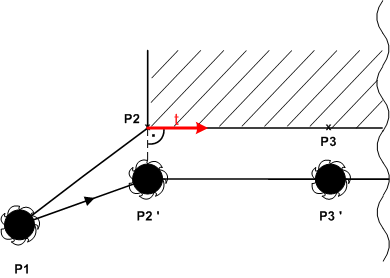
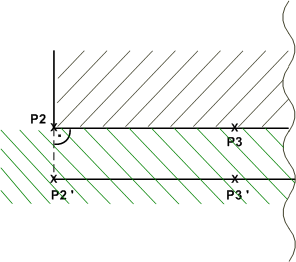
Case 2: P1 the right of the normal n and to the left of the path tangent t
If the start position P1 is to the right of the normal n and to the left of the path tangent t, P2' is moved. P2' results from the intersection of the parallel of P1P2 and the offset distance P2P3. Both straight lines are offset by radius R.
This behavior applies to the range hatched in green.
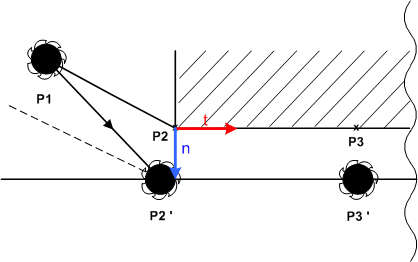
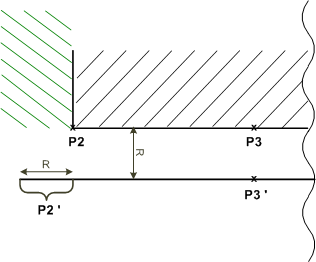
Case 3: P1 to the left of the normal n and to the left of the path tangent t
If the start position P1 is to the left of the normal n and also to the left of the path tangent t, an additional circle segment is inserted during approaching of P2'. In order to avoid free cutting at P2, P2' is not orthogonal to the start tangent of the section P2P3.
The additional circle segment is inserted for all start positions within the hatched green region.
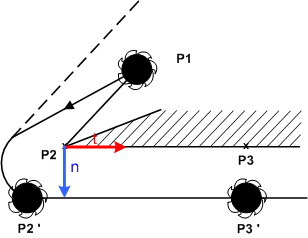
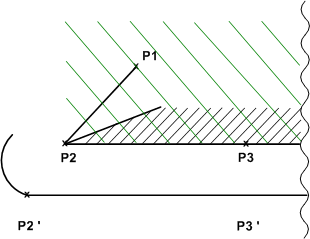
A circle segment follows after the offset
The radius compensation is invariably applied via a straight line. (This must be set in the part program, since otherwise a runtime error will be generated). The contour can then start with a circle. The rules for starting and stopping are the same as before, i.e. here too the path tangent of the contour for P2 is determined, and a distinction is made between the three cases described.
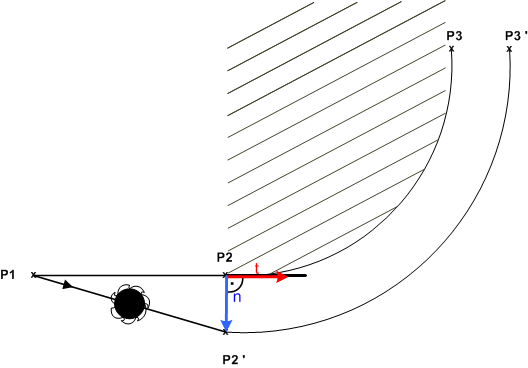
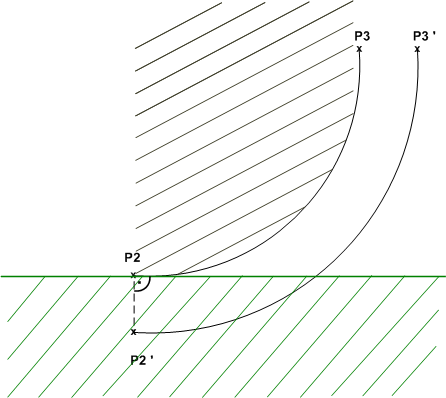
If P2' is always to be approached orthogonal to the path tangent of P2, independent of the starting point, this can be realized with an additional command (see Orthogonal contour approach/departure).